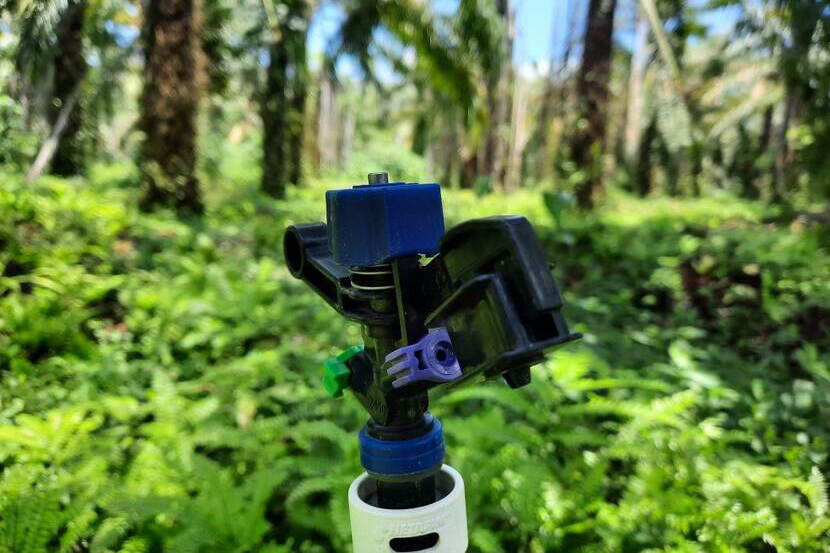Increasing water efficiency in Colombian palm oil cultivation by drip irrigation
The Magdalena department, located in the north of Colombia, hosts over 1.3 million people and is famous for its agricultural production, oil palm being one of the most important crops. Last years, due to climate change, large and prolonged fluctuations in water supply have started to occur causing water scarcity, especially in the dry season. Currently the dominant irrigation practice in palm oil production is furrow irrigation, which has a very low water efficiency.
Of the total production of Colombian palm oil, 11% is imported by the Netherlands. Under the framework of the Dutch International Water Ambition (NIWA), the Dutch Circular Strategy, and the Vision on Circular Agriculture the Government of the Netherlands, through the Partners for Water programme, invests in increasing water efficiency in Colombian palm oil production, to enable sustainable production in the long term.
How can producers be stimulated to adopt more efficient irrigation systems?
By identifying the limiting factors for adoption and contributing to tackling them! The collaboration between the Colombian research institute for palm oil production, Cenipalma, and the Dutch consortium led by the company Delphy BV and completed by Solidaridad Network and Future Water, identified that the main limiting factors in the region are theft of sprinkler systems, the lack of knowledge on the costs and benefits of efficient irrigation systems and the high initial investment costs.
Efficient irrigation systems for oil palm cropping
Last week the consortium members presented and discussed the results of their applied research with oil palm producers and technicians in the Sevilla basin in the Magdalena department in Colombia, during capacity building meetings. The study found out that sprinkler irrigation is the most cost-effective solution for improving application uniformity and crop yield, especially in combination with fertigation. A reduction in irrigation water requirements due to sprinkler irrigation with a field application efficiency of 75% shows apparent water savings up to 67%. Though, theft of sprinkler systems in this region reduces their suitability.

Even though it requires a higher initial investment, drip irrigation is therefore the most suitable choice for this region, since it is not stolen, and it ensures a higher productivity and more water savings compared to sprinkler irrigation. Moreover, the tool IrriWatch was used to show the differences in biomass production and soil moisture content between furrow, sprinkler and drip irrigation by comparing multiple pilot plots. Biomass production and soil moisture content are higher with drip and sprinkler irrigation than with furrow irrigation, especially in the dry season, which means, in turn, higher fruit bunch production. Lastly, a comparison between the costs and benefits of implementing drip, sprinkler and furrow irrigation was offered and validated by the producers.
In the coming weeks, the organisations of the consortium are merging the results of the feasibility study into a future action plan, to define how to continue working on water efficient palm oil cultivation.
This project is a collaboration between Delphy, Future Water, Solidaridad & Cenipalma. It is financed by Partners for Water, part of the Netherlands Enterprise Agency – RVO.